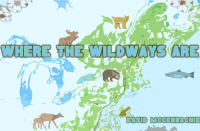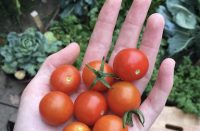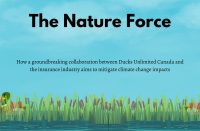THEY SIT BEMUSED under the equatorial sun, like the victims of natural catastrophe, an earthquake perhaps, the second shock imminent and inescapable. The young men and women of Nauru.
Theirs is the first nation in a hundred years to plummet from “First World” to “Third World” status in a single decade. Suddenly, shatteringly, theirs is not a developing nation – it’s an unravelling one. And they’re still falling. Oblivion awaits.
THEY SIT BEMUSED under the equatorial sun, like the victims of natural catastrophe, an earthquake perhaps, the second shock imminent and inescapable. The young men and women of Nauru.
Theirs is the first nation in a hundred years to plummet from “First World” to “Third World” status in a single decade. Suddenly, shatteringly, theirs is not a developing nation – it’s an unravelling one. And they’re still falling. Oblivion awaits.
Generally, shifts that have taken place under the global umbrella of capitalism have been in the other direction, as countries have moved from “developing” to “developed” nation status. Singapore, South Korea, the United Arab Emirates and Chile come to mind. Recently, at the rate of a million citizens a month, China has joined this category.
But Nauru (pronounced: now-rue), a phosphate-rock island in the Micronesian South Pacific, is unique since Easter Island’s implosion a millennium past. Often called the Saudi Arabia of phosphate, it was ranked from 1968 to around 1995 as one of the world’s richest countries on a per capita income basis. This wealth, created almost entirely by the export of phosphate – the tiny island nation’s primary economic activity – was short-lived. Situated 42 kilometres south of the equator and 3000 kilometres northeast of Australia, Nauru tossed away what may have been 1000 years (locals claim 3000 years) of isolation and self-sufficiency in just a few generations.
Today, Nauru is the most ecologically devastated nation on Earth. Its 21 square kilometres host 12,000 inhabitants, perched atop a volcanic column that pitches 4300 metres to the ocean floor. As for the part of the column above sea level, you can think of it as a layer cake on a plate. The exposed rim of the plate is, on average, 200 metres wide around the base, with the “cake” rising steeply 50 metres into the air.
Now picture bulldozers slicing off the cake’s icing: the metre-thick topsoil and roughage, along with the indigenous tomano forest it supports. Next, visualize front-end scoops scraping away the cake’s top layer: several metres of the world’s richest phosphate at almost 39-per-cent purity. Imagine the machines trundling away, leaving the bottom layer of the cake a pitted and grey ecological war zone of dolomitic limestone pinnacles – a stone forest. Left behind, the inhabitants of the smallest island nation in the world are crowded onto the narrow plate rim, praying that the seas won’t rise two metres and seize their last centimetres of habitable land.
In 1968, when the Nauruans took over the country and the phosphate mine from an Australian-British-New Zealand consortium, only one-third of the “topside” had been mined. In the ensuing years, the Nauruans excavated the remaining two-thirds, amid much talk of rehabilitating the ravaged land. Estimates of the total reclamation costs ranged from $58-million to $169-million at one time. Studies by outside experts, recommending rehabilitation, abound. The rehabilitation office, a large, air-conditioned, corrugated-iron structure near the government-owned Meneng Hotel, was established in 1999. But nary a scrap of rehab has happened.
“We are trapped, a wasteland at our back, and to our front a terrifying, rising flood of biblical proportions,” then-President Kinza Clodumar told the Kyoto Conference on Climate Change in 1997.
The Nauruans must have seen it coming. Yet in heady, pre-independence 1963, they rejected penitent Australia’s offer of Curtis Island and citizenship off the Queensland coast. Instead, they bet on their offshore Nauru Phosphate Royalties Trust Fund, which by 1970 had swollen to $1.35-billion. The trust was intended to replace revenue from the mine with annual dividends. Included in its holdings was Melbourne’s tallest building, the 52-storey Nauru House. By 2004, however, the mismanaged trust had slipped into receivership and was drained.
In the 1990s, as the mine ran down, the government tried a new motherlode: money laundering. Nauruan passports went on sale under the table. Some $56-billion in shady Russian funds funnelled through Nauru before international police cracked down in 2003.
For the last few years, refugees have been Nauru’s new phosphate. In 2001, Australia began warehousing refugee claimants at a detention centre on the island. The project earned $6.4-million a year and generated a few jobs for locals, though the security guards were Australian. “Boomerang aid,” the locals called it. Situated on the topside perimeter, the beige, corrugated-iron compound stares out across the dead land. It has room for 500, but by 2008 it housed just one refugee, and the new Australian Prime Minister Kevin Rudd had announced its closing. Most recently, another new industry has been initiated: exporting crushed coral for saltwater aquariums.
Faced with the necessity of going back to traditional ways of scrounging from the sea and the soil, Nauruans realize that they have forgotten how to paddle an outrigger canoe, much less build one with tomano trees – if there were any. So the Food and Agriculture Organization sent in a team of Fijians and a Cook Islander to teach the Nauruans how to grow bananas. And papaya. And backyard veggie gardens.
Rebuilding the society’s structure will not be a simple process. As assistant education director Bernard Grundler says, “We have to start in the homes and schools to change the hand-out mentality.” Last year, gardening entered the curriculum and this year canoe-building is slated. Asked if high school students are aware of their parents’ profligacy, however, he adds, “We do not teach history. We should, but we don’t.”
In his 1992 book, Nauru: Environmental Damage Under International Trusteeship, Christopher Weeramantry laments, “Gone forever were the habits of self-reliance of the past.” In the days he refers to, Nauruans made fishing line from fibres of hibiscus bark or coconut husk. After a month buried in the sand, the coconut flesh falls away, exposing the tough fibres underneath. According to Nauru One Hundred Years Ago, a booklet of the writings of missionary Alois Kayser who arrived on the island in 1902, the best fishhooks for small fish were filed from the human forehead bone just above the eye socket. “The island appears like an oasis, surrounded by a desert of water,” he wrote. “Not an island is to be seen within reaching distance for hundreds of miles surrounding it. The natives, therefore, rely on themselves and their supplies – [they are] self-suppliers to the very extent of the word.”
Today, Nauru’s only bank is insolvent, freezing the savings of the prudent. There is electrical power only half the time and diesel fuel is as scarce as fresh veggies. Freighters used to queue up off Nauru. In 1985-86, they shipped 1.5 million tonnes of phosphate. In 2001-02, they were down to 147,000 tonnes. In something of a last gasp, modest amounts of phosphate were excavated in 2008. Through a process called “secondary mining,” miners found phosphate in lesser amounts under the dolomite pinnacles that bristle across the barren topside.
There are no newspapers to relay news to the locals. A sporadic newsletter published by an anonymous citizen and rife with libellous prose takes its place. “What do you get when you cross a fisherman and a politician?” it asks. “A slimy liar.”
Even in the good times, when money sloshed about the island, the elected parliament balanced its budget only 12 times in 38 years. Once they had a shortfall of $100-million, which adds up to an astounding $8000 per Nauruan. According to one source, the government backed a London theatre production called Leonardo to the tune of $4-million. The cabinet flew to the UK for the opening night and the play closed after a week. Government ministers traveling abroad could claim up to $20,000 per day in living expenses. As one source put it, “Every carpet-bagger took a bagful. In the good times, they’d have three-day parties. You’d go from one party to the next, collect a T-shirt at each.” Nauru’s current national debt is 2500 times its Gross Domestic Product.
“The government is truly broke,” says Australian consul-general Robyn Jenkins. She and the Taiwanese ambassador are the only diplomats stationed in Nauru. The Taiwanese hope the Nauruans will vote to recognize their nationhood at the United Nations. The ambassador rides in a black Mercedes. The Aussies, nursing a bad conscience over their earlier depredations, strive for a low profile. Ms. Jenkins tootles about on a 50-cc scooter, though a white pickup truck is also at her disposal to meet arrivals on the weekly Our Airline Boeing 737-300.
On the mined-out topside, a hundred thousand dolomitic limestone plinths – the Nauruans call them pinnacles – rear six metres high in serried dark ranks to the horizon. It is a terrain that would stop a tank. Vegetation sprouts riotously along the edges of the gravel mining roads. Small white terns swoop from the sky while brown lizards dart and rustle. Yellow and purple blossoms sparkle from the roadside greenery. Penetrate and the mosquitoes rise in welcome. Penetrate 10 paces further and the land gives way to jagged limestone canyons, an immense grey graveyard.
The Nauruans have dumped their trash everywhere, duplicating the practice of the miners whose rusting and abandoned machines dot the wasteland like shipwrecks on the craggy shoals. Aerial photos show a jigsaw puzzle, with the lines between pieces formed by the narrow crevasses that separate the stone knuckles.
On the beach below are a hundred rusting government projects; housing that cries out for upkeep; and aging cars with salt-riddled bodies, many little more than four tires and a dashboard. The day is not unimaginable when the last barrel of diesel will come ashore, the last bag of Thai rice, the last syringe of insulin. Then what? Far too late, citizens are being asked to trade in their air conditioners for shovels and paddles.
In his bestselling book and Massey Lecture series, A Short History of Progress, Ronald Wright argues that societies rise with the exploitation of resources, and decline as they are depleted. He talks of Easter Island, the Sumerians of the Fertile Crescent and the Maya. Caught in the momentum of a racing, expensive global economy, it seems that the whole world is rushing headlong into resource impoverishment of the kind that defined the decline of the cultures Wright talks about. We inhabit an island, he warns, that is as doomed as Easter Island once was. As Nauru today is.
During his 21 years as a staff reporter at the Toronto Sun, David Kendall covered everything from rape n’ pillage to Mrs. Brown’s cockroach infestation. His current novel, Death Wish, is set mainly in Nauru, a place he visited in 2007.












